HSR-Benelli press launch: Part 2
Compact three-cylinder motor powers entire lineup
In Part 1 of the HSR-Benelli press launch story, Vasilis Moraitis talked about the mechanical problems that plagued the day of test riding, missing the chance to try out the Race Edition Ski and finally riding the two new Runabout models.
This time around he will take a closer look at the three-cylinder engines, hulls and new features of the of the HSR-Benelli lineup.
Decoding the three-cylinder engine
Design and aesthetics are two terms closely associated with the Italian philosophy of engineering. For instance, take a Bimota motorcycle or a Ferrari sports car and compare them to anything else…there are simply no means of comparison.
The first thing you notice about HSR-Benelli’s Series-S Race Edition, Series-R Naked Edition and Series-R Pro Edition watercraft is the compact dimensions of the three-cylinder motor. It looks tiny even when placed in the Ski’s engine compartment.
The overall displacement of 1,098cc is a result of the bore and stroke of 66mm and 82mm. The 12 valves are taking orders from the dual overhead camshafts, while the three cylinders are fed via triple Dell ‘Orto throttle bodies which are equipped with a Throttle Position Sensor (TPS). The TPS enhances the throttle response under the rpm scale, avoiding any bogging at sudden throttle opening. The injectors come from Bosch while the throttle bodies are toped with an air plenum, which has similar design characteristics to R&D’s.
Fuel atomization is achieved by the six holes of the injectors. The ignition is designed by Walbro and is manufactured in Italy. All electrics are assembled and placed nicely on an aluminum base feature that I saw for the first time on the Team Kawasaki Factory SXi Pros back in 2002. The coils are made by Beru and are built within the spark plugs. The off-throttle steering system is situated on the upper part of the throttle bodies.
On the exhaust side the 3-1 exhaust manifold attracts your attention with its immaculate design and perfect fabrication. The through-hull silencer exits at the right hand side of the pump cavity. Two electronic water injection systems keep the exhaust temperature at the optimum level. They are fed though an open loop system that sacks water from the pump and they operate just a fraction above 1,000rpm. The valves close electronically if the engine shuts down or if you’re airborne. The first water injector is fed by a 3-1 manifold and the other exhaust tube that is directed to the through hull silencer. The injector fittings are made from brass instead of anodized aluminum. In my mind this was the only thing that ruins the aesthetics of the engine compartment.
The overall weight of the new engine is about 3 kg lighter than the two-cylinder Weber motor that was used in the S4 (75kg). All electric cables can be removed quickly and easily since they are connected to the vital parts of the engine (charging system, ignition unit, etc.) via waterproof, high quality connectors. Horsepower is translated into thrust through an extremely compact reduction gearing system with a ratio of 1.972:1. The complex designs of the couplers look familiar to the ones used in the Ultra 250X.
The pump is made by Solas and it is a 14-vein design for the Runabouts, compared to the 12-vein design used on the Ski. The reduction and steering nozzle diameter differs between the two Runabouts and Ski. The pumps feature interchangeable rings that allow the rider to alter the specs according to the engine modifications. The Runabout pumps accommodate a four-blade stainless steel impeller while the Ski’s are equipped with a three blade impeller. Since HSR-Benelli has a Spartan philosophy on tech specs, we were equipped with everything necessary in order to measure the diameter of the rings on each vehicle. Chief mechanic Alfonso ‘Willy’ Sieber informed me about the impeller pitch as well as some of the engine characteristics.
The new three-cylinder Benelli engine is available in five versions, three for the Series-S models and two for Series-R models. Horsepower figures start from around 100hp and reach 172hp. The horsepower difference is achieved by altering the mapping of the ECU and changing the compression ratio and the camshaft timing. The diameter of the throttle bodies, as well as the size of the injectors, remains the same in all engine applications.
Hull manufacturing process secrets
When Yamaha invented the NanoXcell technology for its hull manufacturing process, the company made sure to inform the press and its future clients about its significance. On the other hand, while I was talking Sieber I discovered that HSR-Benelli utilizes an interesting manufacturing process for both hull and deck. Apparently, the Austrian company does not care enough to inform the press or its customers about this particular process.
The company utilizes metal moulds where the fiberglass is applied, the resin is injected afterwards and the whole fix materials are compressed under a specific temperature. Then, the hull and the deck are kept in an oven in order to crystallize and secure the bonds. This process allows the hull and deck to be fabricated at exact dimensions and tolerances. Therefore, no matter how many hulls are made, all of them have the exact same dimensions. This is a very important aspect in manufacturing, especially for a company that has been around the personal watercraft scene for such a short time.
The new Ski and Runabout features
There is no doubt that the design of the new Series-S hull and deck is simply awesome. The aggressive angles of the deck and the stylish pads around the tray make the whole craft look outstanding. The handle pole itself, along with the unique digital display, gives a high tech glamour to both crafts. The fuel tap has been positioned in a whole new place. The rear part of the tray is lifted and the mat looked similar to those made by Jettrim for Rius Racing. The footwalls are covered with a soft elastic material and slight lifters are installed at the bottom of each side.
The actual hull is a modified S4 with larger built-in sponsons at the front and small modifications all over. The nose has been modified in such a way to accommodate the metal hook without protruding. At the rear, special aluminum hull inserts with thread plan accommodate additional supports in order to tie the craft properly on a trailer.
The RRP look-alike handle poles are not adjustable, though it’s a stylish bonus for both stand ups. The turn plate is bolted on the top yoke, which is secured onto the two aluminum poles by Sikaflex and screws. Since I know how hard riders can be on the pole I strongly believe that this could have been achieved in a better way.
The digital display is a unique feature to the Ski class. Depending on which mode you select, it allows you to pre-check the engine parameter such as idle speed and TPS operation. It also has three warning indicators (oil, engine and fuel level). The panel is operated via the blue button (above the start and off buttons) and the trigger lever. Both levers are made in Italy and enhance the stylish steering system. The hood design is unique and lightweight, but the research and development department have to find a better way of securing it on the deck.
The Runabout features a small glove box, which looks roomy enough. The mirrors are small and their shape resembles those featured on Formula One cars. The seat is extremely lightweight and the cover provides good grip, though it does not come with a strap. The boarding handle is stylish and lower on the deck a nice aluminum hook is featured in order to put the strap on for wakeboarders. The deck design is simply unique and makes the craft look like a Stealth powerboat ready to fly. This is why the company claims that they have built a Formula One car for the water.
The HSR-Benelli expansion
Although the United States is the biggest market for personal watercraft, the Austrian-based HSR-Benelli has different plans for its future. Top priority has been given to the European market, according to sales manager Thomas Breuss. Then the new models will find their way to Russia, which HSR-Benelli believes to be the upcoming market in Eastern Europe. Afterwards the new products will be exported to Middle East.
Meanwhile, the company has formed the HSR-Benelli USA headquarters, which are based in Florida and are already working on the homologation of the new models. The new units will probably be available in the USA in the spring of 2009.
Bottom line
To be honest, I am still skeptical about the whole situation and the issues that appeared during this particular press launch. I am trying to figure out who gave the green light to the personnel to proceed with the presentation since the products, in my opinion, had not been tested properly by the company in order to determine their real endurance, performance and durability.
I believe that the press is the actual showroom of the company to the consumer. For that reason I feel that these preproduction units have to perform and look better than the actual product.
In this sport we need a new breed, possibly a new manufacturer with new ideas and progressive thoughts. On the other hand, I don’t know how HSR-Benelli will manage to have these products ready with the final details for the customers in the middle of July in the European market. I believe that the Austrian company was over enthusiastic about the new project. The new Runabouts were good in all aspects when they worked, but when you buy them they have to operate properly. After all, you go to the water to have fun and put everything else behind.
Related Reading:
HSR-Benelli press intro: Part 1
Get PersonalWatercraft.com in your Inbox!
Like PersonalWatercraft.com on Facebook
Comments
Most Popular

2025 Yamaha JetBlaster PRO 2-Up Review

Remembering the Sea-Doo XP

2024 Kawasaki Jet Ski STX 160X Review

Whatever Happened to the Wetbike?

2017 Kawasaki Jet Ski Ultra 310LX Review




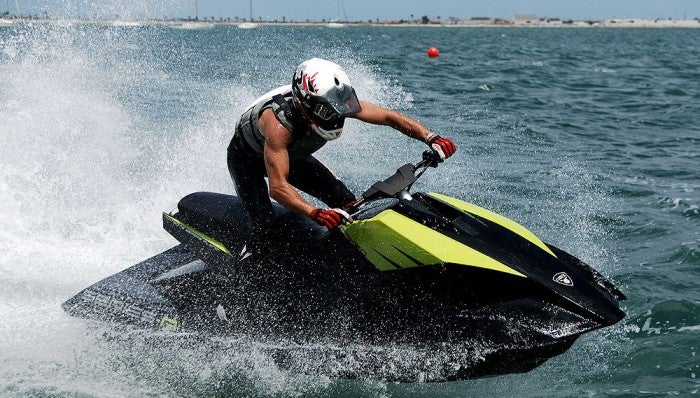
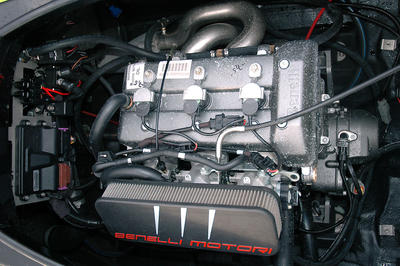
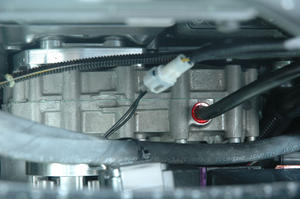
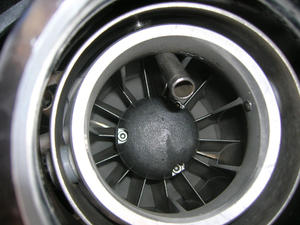
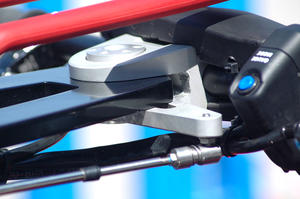
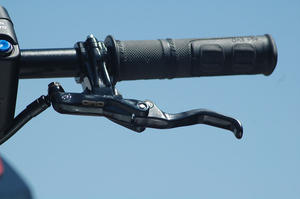
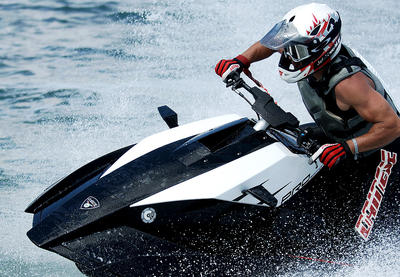
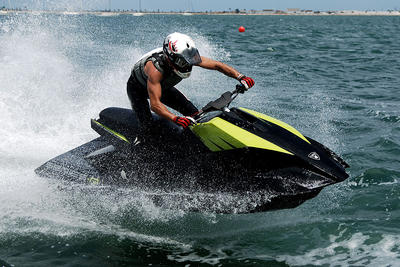
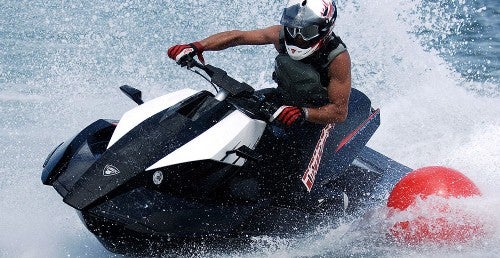








 Your Privacy Choices
Your Privacy Choices